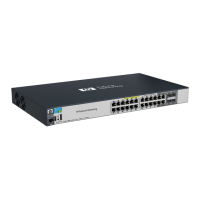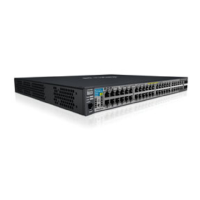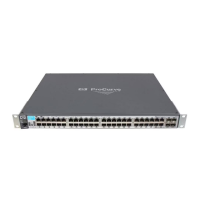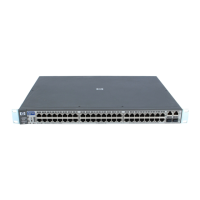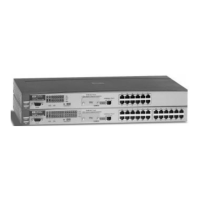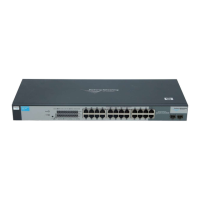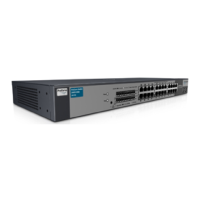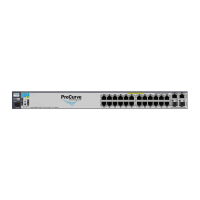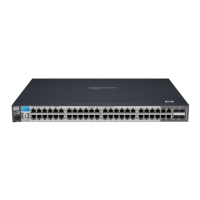IP Routing Features
Configuring RIP
Configuring RIP
This section describes how to configure RIP using the CLI interface.
To display RIP configuration information and statistics, see “Displaying RIP
Information” on page 3-33.
Overview of RIP
Routing Information Protocol (RIP) is an IP route exchange protocol that uses
a distance vector (a number representing distance) to measure the cost of a
given route. The cost is a distance vector because the cost often is equivalent
to the number of router hops between the ProCurve routing switch and the
destination network.
A ProCurve routing switch can receive multiple paths to a destination. The
software evaluates the paths, selects the best path, and saves the path in the
IP route table as the route to the destination. Typically, the best path is the
path with the fewest hops. A hop is another router through which packets
must travel to reach the destination. If the ProCurve routing switch receives
a RIP update from another router that contains a path with fewer hops than
the path stored in the ProCurve routing switch's route table, the routing switch
replaces the older route with the newer one. The routing switch then includes
the new path in the updates it sends to other RIP routers, including ProCurve
routing switches.
RIP routers, including ProCurve routing switches, also can modify a route's
cost, generally by adding to it, to bias the selection of a route for a given
destination. In this case, the actual number of router hops may be the same,
but the route has an administratively higher cost and is thus less likely to be
used than other, lower-cost routes. A RIP route can have a maximum cost of
15. Any destination with a higher cost is considered unreachable. Although
limiting to larger networks, the low maximum hop count prevents endless
loops in the network.
The switches covered in this guide support the following RIP types:
■ Version 1
■ V1 compatible with V2
■ Version 2 (the default)
3-27

